Of all of the various types of attractants hunters use to try to give themselves an edge, calls remain far and away one of the most popular. Unlike with turkey hunting, unfortunately deer calls have a much lower success rate, and even highly experienced hunters will still be lucky if they succeed in calling in a big buck or doe more than 10 percent of the time. Still, this doesn't mean that deer calls are useless, as it only takes calling in one big buck to make it all worth it.
Deer hunting is often a game of extremely fine margins, meaning anything you can do to give yourself a leg up is worth it if it potentially gives you a better chance of success. This includes outfitting yourself with the best deer call you can get your hands on. The feeling of seeing a deer through your binoculars or rifle scope and then successfully calling it in within range is something you'll never forget. However, it's something that takes a bit of knowledge and skill to do well.
Several different types of deer calls have been proven to be effective in certain situations, but it's all about learning when and how each one works best in order to increase your chances of success instead of simply trying to rely on blind luck like so many other hunters. Considering how many different brands and types of calls are now on the market, deciding which is best for what situation can be quite tricky. This is why we've produced this guide to help teach you some of the finer points. You can also find reviews of some of the top deer calls, and the difference between each type of call.
Deer Calls | Category |
|---|---|
Overall best deer call | |
Best bleat | |
Best deer grunt call | |
Best snort wheeze | |
Best rattle |
Different Types of Deer Calls
Deer use a range of different noises for communication, all of which humans have attempted to replicate in some form. From the rattling of two bucks' horns as they fight for mating rights to the sound of a young fawn crying out for its mother, you can buy a call that allows you to mimic virtually every noise a deer makes.
Grunts
Grunt calls are the most common and often most effective type, allowing you to mimic either the deeper grunts of bucks or the slightly higher doe grunt. Deer grunt for a number of reasons. A single 'contact' grunt is usually given when they encounter each other, while bucks often give 7-10 'tending' grunts when close to a doe they're after or a few deep, threatening grunts to other bucks. Most grunt calls are a plastic or wood tube designed to mimic buck grunts, although some of the top models allow you to change between buck, doe and fawn.
Bleats
Bleats are sounds made by does and fawns, either to call one another or when a doe in estrus is trying to get the attention of a buck. Both doe-in-estrus and fawn distress bleats can be quite effective in certain situations.
Snort-Wheeze
This is the most threatening type of call a dominant whitetail buck makes, warning off other smaller bucks in the area. As it's made by big bucks, it may potentially scare away any smaller bucks, but it may potentially cause a bigger deer in the area to come investigate. These noises can typically be made with most grunt tubes, although there are a few specialized snort-wheeze calls as well.
Rattles
The noise of two bucks sparring against each other carries a long way, often leading to other deer in the area coming to investigate. This type of sound can be made in numerous ways, with some hunters simply preferring to pack a pair of sheds and rattle them together. However, you can also find a range of different products designed to mimic this sound and help it carry further.
Deer Calling Tips and Common Mistakes to Avoid
Each brand and type of deer call is different, so it's important that you take the time to learn how to use your chosen one properly to have the best chance of success. There's no point spending the money on one of the best deer calls if you don't play on at least making an effort to learn how to make authentic sounding noises with it, as it's not just as simple as blowing in your grunt tube and hoping for the best.
While some of the best deer calls allow you to make almost any of the noises, each type of noise requires a slightly different technique. Therefore, it's always a good idea to spend some time practicing your calling skills before heading out into the field. Luckily, you can easily find thousands of instructional videos online that can help. As well, many of the top calls come with a DVD that shows you exactly how the call should be used so you can perfect your technique.
Alternatively, if you don't have the time or patience or simply can't be bothered, there are a few easier options out there. Rattling is one such option, while you could also invest in an easy-to-use bleat can. If all else fails, you could always use one of the many deer call apps on your smartphone. However, even the best deer call app is worthless if the deer can't actually hear the sounds. This makes them mostly best for hearing and trying to imitate the various calls, unless you want to carry a set of speakers up into your tree stand with you.
The point of deer calls is to imitate the noises that deer make during mating season, which is why it's important to know exactly when deer make each type of call. However, it's also just as important to know when and when not to call. One common mistake hunters often make is calling too loudly, too often or calling again to a deer that’s already looking at you or heading towards your position. All of these things are generally counterproductive and often result in scaring the deer off.
When using a grunt tube, it's usually a good idea to start off calling more quietly so as not to scare off any bucks that might be close by. If nothing shows up after some time, you can then begin increasing the volume so your calls carry further. Another useful tactic is trying to combine different types of calls to more accurately mimic authentic mating sounds, which we'll cover in more detail below.
For those who want to try rattling, there are also a few tips that can help increase your chances of success. Just like with calling, rattling is all about making the noises sound as real as possible. When two deer begin sparring, they usually start off slow before gaining in ferocity. For this reason, you should also start off a bit slower and then gain in strength as you go, rattling for around two to three minutes before taking a 20 to 30 minute break and then doing it again. To make it sound even more realistic, try throwing in a few random grunts or rake your rattle across a rock or tree.
Adjusting Your Calls Based on the Season
One of the biggest mistakes many hunters make is not knowing when to use which type of call. Early season hunts require much different tactics than when hunting during or after the rut. So read on to learn what works for each time of the year.
Early Season
For early season hunts, you'll probably need more than a bit of luck to successfully call a deer in, but it does happen. The problem here is that the does aren't even about to go into estrus, meaning the bucks aren't going to be too interested in them yet. This means your best bet is a buck grunt, especially if you can adjust your tube to make the grunt less deep so it sounds like a young buck. You might also be able to get one's attention with either a normal doe or fawn bleat, but the grunt is usually your best bet.
Pre-Rut
Grunting still works well during the pre-rut, just as it does any other time. However, now you can also start adding in some rattling, which is a great way to get even the less aggressive bucks in the area to come take a look. Even though the rut isn't in full swing yet, you might consider trying a doe-in-estrus bleat as well.
Rut
With the rut in full swing, rattling, grunting and doe-in-estrus and fawn-in-distress calls can all be effective. It's all about trying to create combinations that accurately mimic deer mating activities. If you see a buck out in search of does, several short doe-in-estrus bleats might convince him there's a hot doe near your stand. Another useful strategy is a doe-in-estrus bleat followed by several short 'tending' grunts, or you could try putting a fawn-in-distress bleat before the other two, which mimics the situation where a doe leaves her fawn to mate. The snort-wheeze is also a great option during the rut, even if you see a buck already chasing a doe. Another idea in this situation is a fawn-in-distress bleat, which could call the doe to you with the buck hot on her trail.
Post-Rut
Although the rut is over, the bucks haven't yet shed their antlers and are still more than willing to mate with any does in estrus should they happen to find one. For this reason, the doe-in-estrus bleat may still be able to call in a buck or two. Alternatively, if you're hunting for does, you might see if a fawn-in-distress bleat brings one in looking for her lost little one.
Best Deer Call in Each Category
Let's take a closer look at the top choices for each type of deer call.
All-Around Best Deer Call: Extinguisher Deer Call
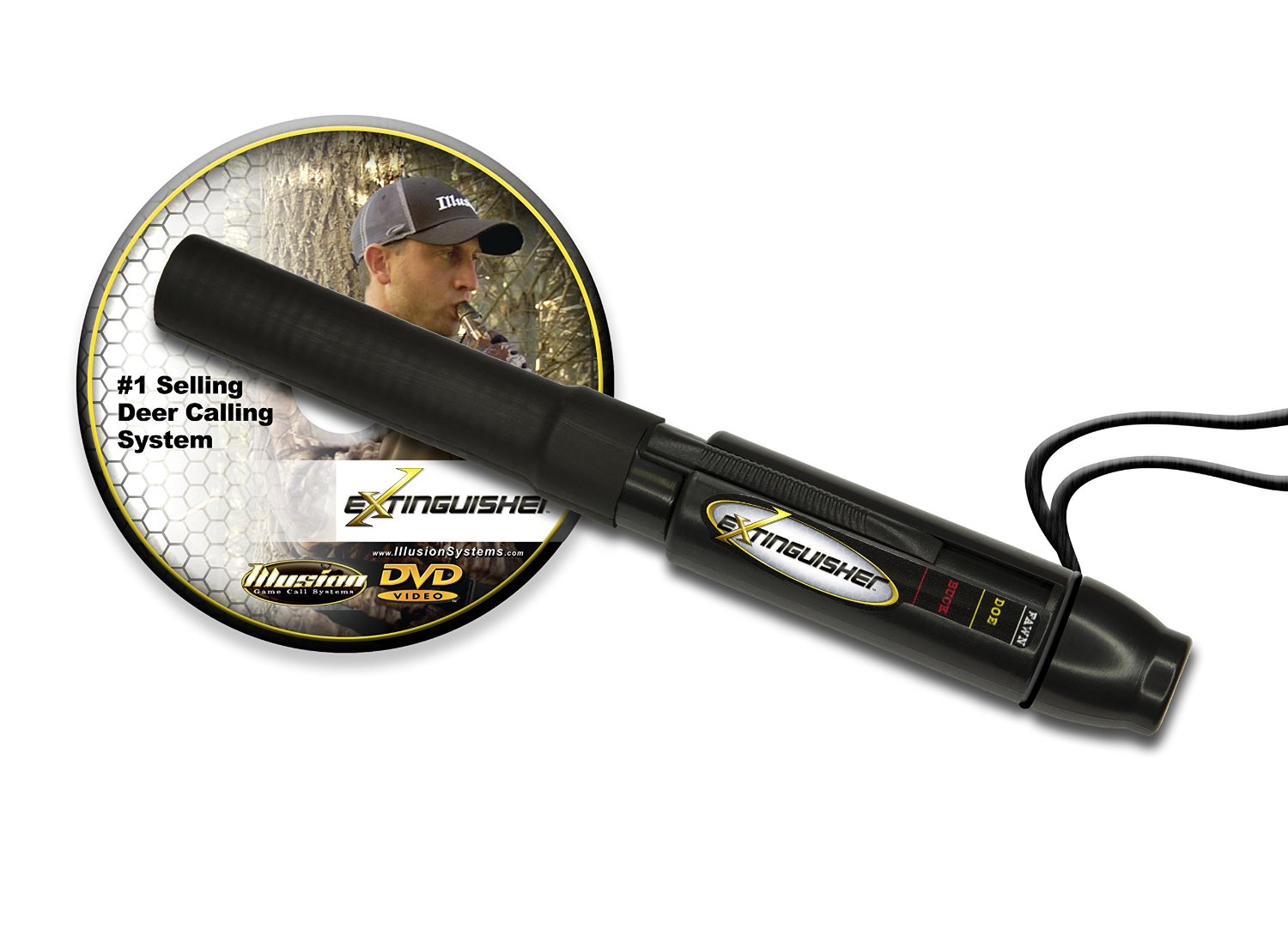
While most calls are limited to only one type of noise, the Extinguisher Deer Call from Illusion Game Call Systems allows you to accurately mimic buck, doe and fawn sounds thanks to its unique ModiSlide function that changes the tone of the call. As well, the special double-layer Throat-Tube makes this one of the most realistic sounding calls on the market. The Extinguisher is so good it received a record 99.6-percent rating in a NAHC field test, and it includes a DVD/CD to teach you exactly how to make accurate sounding grunts, bleats, snorts and wheezes.
*Click here for a full Extinguisher Deer Call review
Although the price of the Extinguisher should be well within the budget of most hunters, if you're looking for something with a lower price tag that still allows you to make buck, doe and fawn calls, then you might want to check out Hunter Specialties' popular True Talker deer call.
Best Bleat: Primos' The Original Can Deer Call with Grip Rings
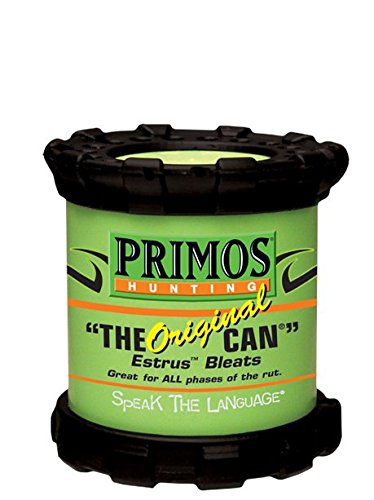
By far the easiest call to use, all you have to do is turn this innovative can over and a special mechanism inside it perfectly mimics a doe-in-estrus bleat. This particular version is an upgrade on the original, as it features special rubberized grip rings to help keep you from dropping it out of your tree stand. Primos also makes two other versions of this call, The 'Lil Can, which makes higher pitched doe/fawn bleats, and The Great Big Can, a larger version designed to create long-range estrus bleats to draw bucks in from greater distances. The Original Can is still the most popular, but all three have their uses. For hunters who truly want to be prepared, Primos' The Can Family Pack gives you all three
Best Deer Grunt Call: Primos Buck Roar

If you're looking to mainly make loud, deep grunts to call those bigger bucks in, the Primos Buck Roar is an outstanding choice. Although it's not as versatile as the Extinguisher, it's easy-to-use and can be extremely effective during the peak of the rut. It also features the Challenge Wheeze located on the top of the call, allowing you to experiment with grunt-wheeze combinations.
Best Snort-Wheeze: Flextone Bone Collector Buck Collector
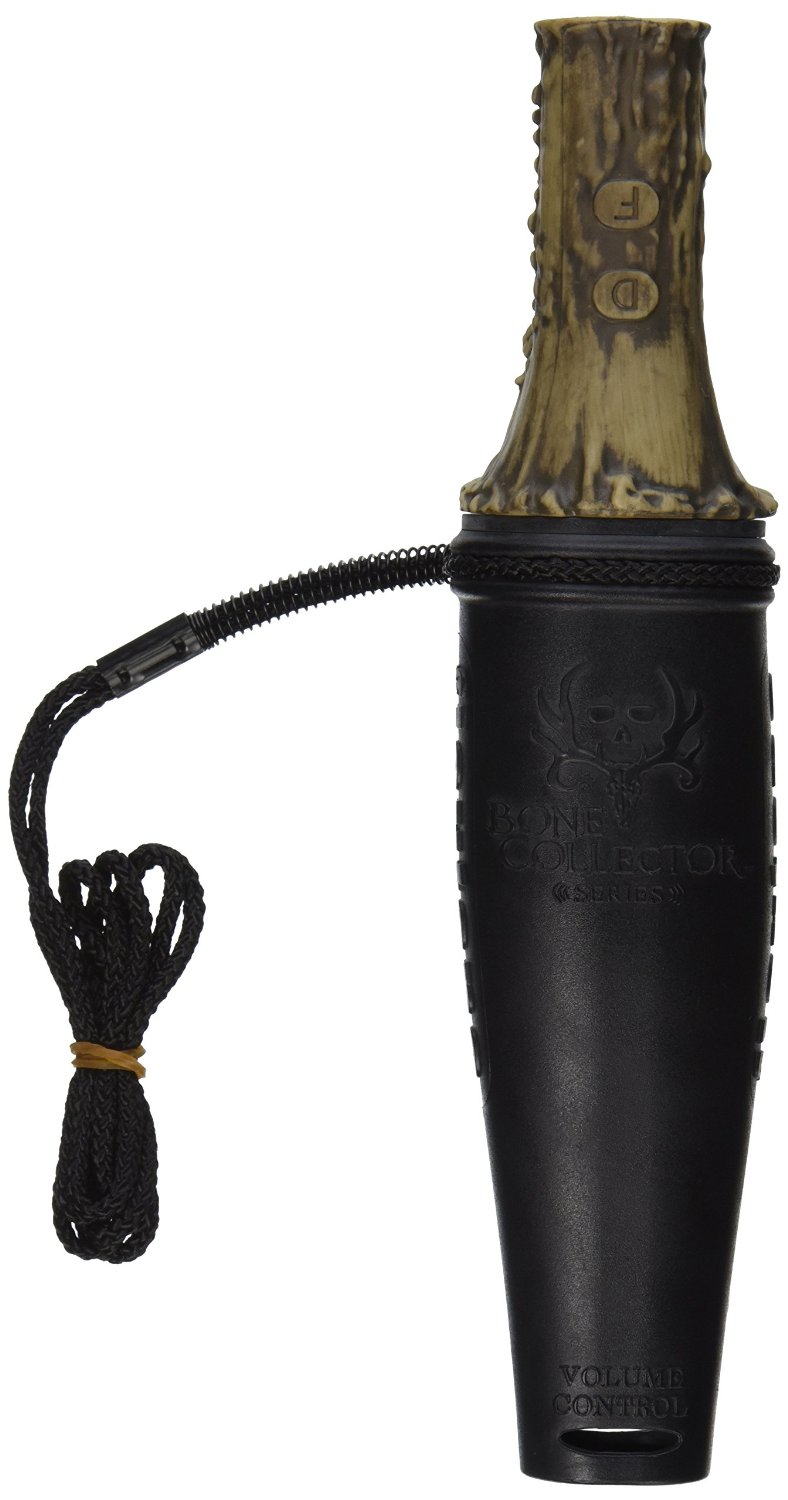
An all-around excellent call, the Flextone Bone Collector Buck Collector allows you to make the whole range of buck, doe and fawn calls. However, where it really excels is in those deep, threatening buck grunts, snorts and wheezes.
Best Rattle: Knight & Hale Rack Mag Rattling System
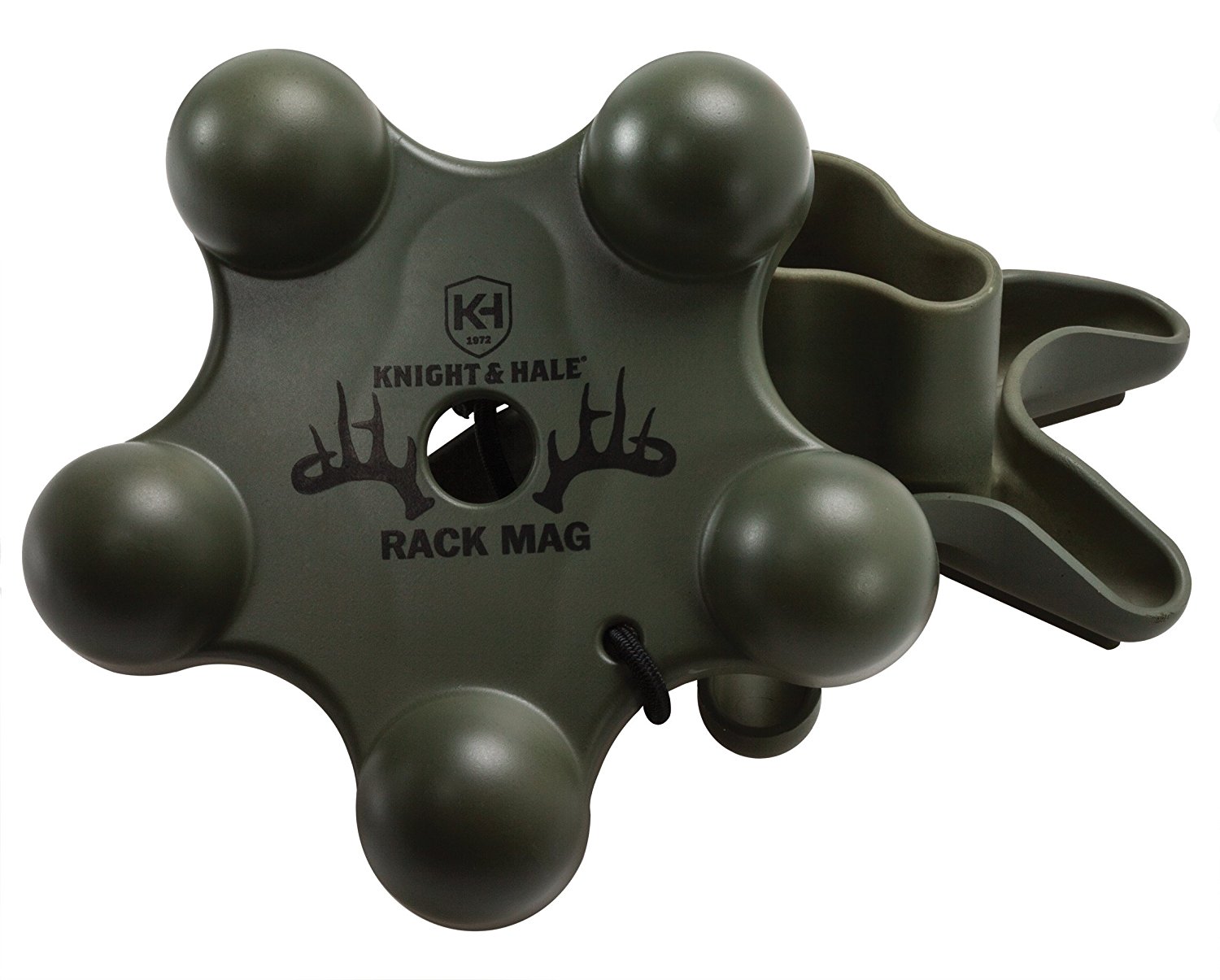
While there are a number of different rattling products out there, including a range of easy to use rattling bags, the Rack Mag Rattling System is both the easiest to use and one of the most realistic sounding—even better than the original Knight & Hale Pack Rack. Simply twist, turn and hit the two small rattles together to create authentic sparring noises that will draw the bucks right in. For such a small product, the sounds carry extremely well thanks to the high-density plastic construction. Still, the best part about this rattling system is its small, compact size, as it can easily slip in any pocket or pouch.
Choosing the Best Deer Call
All of the above products are fantastic choices for both beginners and more advanced callers. However, it's important to remember that all of them are only as good as their user (with the exception of The Original Can), so make sure you put in a bit of time practicing before the season starts. As well, even if you have a preference for a specific type of call, it never hurts to carry at least one other type with you, as you never know what situations you'll encounter. At least you'll have something else to help you pass the time waiting and watching in your stand.

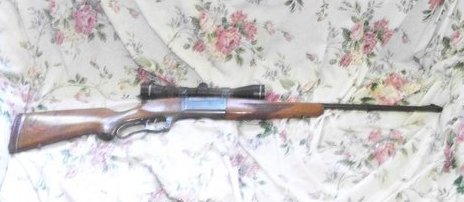


Been deer hunting east Georgia all my life last 2or3 yrs the bucks or even the does r paying any real attention to my calls what could be the problem